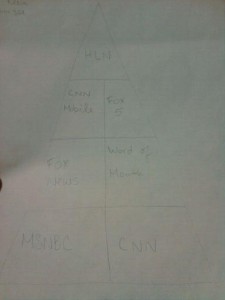A Kent State University graduate, Mandy Jenkins is now the Social Media Editor for TBD.com, She expained that 90% of her work is listening, doing research, and getting information from people for relationship cultivating.
Twitter, networking and knowing the right people helped her and her fellow employees at TBD.com get their jobs within the organization.
It was interesting how she told us that when she first got to TBD.com for a job, they had her and the other hopeful employers sit down and write abouta nything that they wanted to write about for 30 minutes. She wrote about “big media” and how much she disliked it, the same things she blogs about on ZombieJournalism.com.
And they loved it! So from then on, she was an official employee of TBD.com. Very cool.
Crazy fact: She has about 9-10,000 followers on Twitter for TBD.com and barely had half of that when she worked at the Cincinnati Enquirer — the only newspaper in that area!
She introduced to me (and probably nearly all my classmates) to Twitter Search. This search engine seemed really cool in getting info about anything and everything that people tweet regarding whatever you want to find out about. For example, she explained how there was a fire in Dupont Circle. She searched “fire near DC” in the Twitter search and voila! She saw all the people who were tweeting and taking pictures about the fire and was able to interact with them on the spot!
And as far as local news is concerned, Mandy Jenkins and TBD did some amazing thigns for the people stuck in the winter storm during rush hour the other week. She was live tweeting to everyone who wanted to know what was going on in the exact area they were in to help them out and let them know the details.
Another thing she told us about was the Twitter Trends Map. This is a map on your computer screen that shows the world and what Tweet words are being said the most. This is really an amazing tool to be able to find out what’s big and happening in certain parts of the world.
